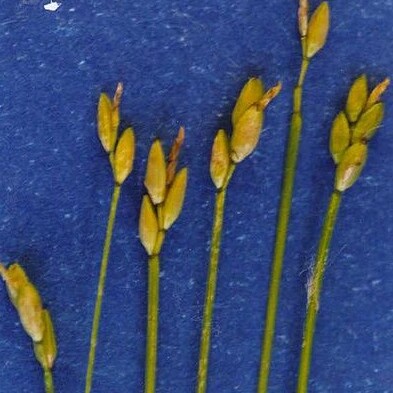Rhizomes freely branched, often mat-forming, 0.6–1.6 mm in diam. Culms loosely erect, capillary, 10–70 cm. Leaf blades 1–2 per culm, lax, ± flat, 1–25 cm × 0.4–1.3 mm, soft. Spike oblong to narrowly oblong, 4–15(–18) × 2–4 mm, with 2–7 staminate flowers and 2–9(–13) pistillate flowers; staminate portion often short or occupying nearly entire spike. Pistillate scales 1/2 as long as perigynia, proximal scales sometimes exceeding perigynia or spike. Staminate scales almost hood-shaped, tightly clasping rachis. Perigynia slightly to strongly overlapping, with 2 marginal and 16–28 finer veins (plus others more faint), 2.4–4.9(–5.4) × 0.8–1.3 mm. Achenes oblong-ovoid, 1.3–1.9 × 0.7–1.2 mm. 2n = 50, 52.


